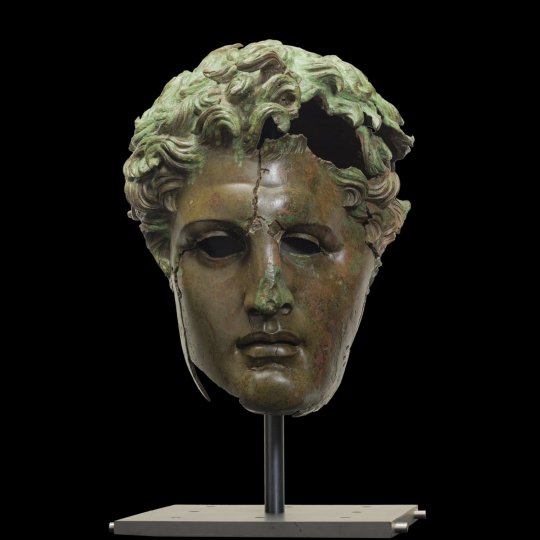#Demetrio
Explore tagged Tumblr posts
Text




Kissing under the moonlight - part 2
#baldur's gate#baldur's gate 3#bg3#bg 3#halsin#halsin romance#bg3 halsin#bg3 tav#halsin x tav#tav x halsin#my ocs#demetrio#halmetrio#i lvoe them your Honor 🥹#the way they lingerrr
15 notes
·
View notes
Text

Semplicetta tortorella,
Che non vede il suo periglio,
Per fuggir da crudo artiglio,
Vola in grembo al cacciator.
Voglio anch’io fuggir
La pena d’un amor fin or taciuto
E m’espongo d’un rifiuto,
All’ oltraggio ed al rossor.
[Metastasio, from Demetrio]
#drawing#art#ink#ink drawing#pen and ink#pen#bic pen#illustration#metastasio#literature#music#vaccaj#demetrio
6 notes
·
View notes
Text
youtube
This seems really cool! Bilingual Italian/Portuguese aria recording!
[Demetrio - Non v'è più barbaro / Não há mais bárbaro]
Relevant to my opera translation interests. Check out the rest of the album too, there are a few more tracks like this.
4 notes
·
View notes
Photo

PRIMA PAGINA Gazzetta Del Sud Calabria di Oggi venerdì, 13 giugno 2025
#PrimaPagina#gazzettadelsudcalabria quotidiano#giornale#primepagine#frontpage#nazionali#internazionali#news#inedicola#oggi prime#ponte#prendere#forma#nella#gioia#taum#estate#grande#melito#daniela#demetrio#gazzetta#occhiuto#indagato#manager#ernesto#vertice#paolo#della#segreteria
0 notes
Text

First drawing of the year. Feels great!
#イラスト#digital art#oc#original character#cute#illustration#sketch#bat#giolay#demetrio#also known as#batmetrio#escoatic#pet#pet bat#cat#fotografia
1 note
·
View note
Link
"San Demetrio." . "Históricamente hay pocas noticias sobre Demetrio, un diácono que vivió antes del siglo V y murió como mártir en Srijem, Panonia. Probablemente era un ciudadano de Tesalónica - ahora Salónico - en la provincia griega de Macedonia, donde fue arrestado por su predicación del Evangelio de Jesucristo". ➜ https://h2p.rocks/San-Demetrio . Follow us 👉🏻@here2pray👈🏻 . . . . .
#santodeldia#santoral#Dios#jesus#jesucristo#Espiritusanto#eucaristia#iglesiacatolica#comunion#adoracion#virgenmaria#oracion#santorosario#rosarioenlinea#rosarioenvivo#festividad#celebracion#San#Demetrio
0 notes
Text
For #FabricFriday on International #HorseshoeCrabDay:

Virginia Lee Burton Demetrios (USA, 1909-1968)
Low, Low Tide, 1962
(Folly Cove Designers collection)
Ink on cotton
Cape Ann Museum
#animals in art#20th century art#animal holiday#Virginia Lee Burton Demetrios#women artists#1960s#fabric#Fabric Friday#International Horseshoe Crab Day#horseshoe crab#lobster#crab#fish#invertebrates#cotton print#Folly Cove Designers#Cape Ann Museum#American art#sea creatures
463 notes
·
View notes
Text

Demetrius I Poliorcetes
#demetrius i poliorcetes#demetrius poliorcetes#art#macedonian#nobleman#king#bronze#bust#head#demetrios poliorketes#ancient greek#ancient greece#classical antiquity#europe#european#history#macedon#macedonia#antigonid dynasty
244 notes
·
View notes
Text
I'm making some new stuff for Demetrios, since I've noticed that most of the stuff I've made previously looks bad and it's old.
I've redrawn some of his siblings and damn they look different...so I'm gonna gently put this here and keep working



THIS IS A JUMPSCARE, Demeter looked so different... everything was different, damn


#please be nice#my boy😭#tagamemnon#greek mithology#greek mythology#greek mythology oc#the iliad#demeter#demetrios
111 notes
·
View notes
Text
DEMETRIOS’ LISTENER!
I have finished drawing this man hehehe. (Also little doodle)


HIS HAIR TOOK TOO LONG AUGH- (Also I did not forget the necklace COUGH COUGH…It’s just under the jacket/blazer thing)
Also, if you’re wondering where his earrings and eye shadow colour came from, it’s from Demetrios’ hair LMAO


He’s so gay/lh
56 notes
·
View notes
Text
Writing Notes: Novel Editing

Below are 4 different types of novel editing. Revising in the right order is essential if you want your book to be in the best shape possible.
Developmental Editing
Comes first.
Involves looking at the story as a whole.
Also called structural editing, or content editing.
Base components. Plot, structure, characterization, pace, viewpoint, narrative style, and tense:
Plot: Sequence of events that take the reader from the beginning to the end.
Structure: How the plot is organized. Even if B occurred after A, the reader might learn about B before the events of A are unveiled.
Characterization: How characters are represented such that we can make sense of their behavior as we journey with them through the story.
Pace: The speed at which the story unfolds. Effective pace ensures readers feel neither rushed nor bored. That doesn’t mean the pace remains steady; a story can include sections of fast-paced action and slower cool-downs.
Viewpoint: In each chapter or section, readers should understand who the narrator is—whose eyes they are seeing through, whose emotions they have access to, whose voice dominates the narrative. It also means understanding the restrictions in play such that head-hopping doesn’t pull the reader out of the story.
Narrative style: Is the narrative viewpoint conveyed in the first, second or third person? The choice determines a narrative’s style.
Tense: Is the story told in the present or the past tense? Each has its benefits and limitations.
Notes: On Developmental Editing
Types of developmental edits:
Full-novel edits in which the editor revises (or suggests revisions) that will improve the story;
critiques or manuscript evaluations that report on the strengths and weaknesses of the story; and
sensitivity reads that offer specialist reports on the potential misrepresentation and devaluation of marginalized others.
Different editors handle developmental edits in different ways.
One might include an assessment of genre and marketability; another might not.
Some editors revise the raw text; others restrict the edit to margin markup.
Check what you’re being offered against what you want.
Developmental editing isn’t about checking spelling, grammar, and punctuation.
Line Editing
The next step in the revision process; it is stylistic work.
A strong sentence elevates story; a poorly crafted one can bury it.
This level of editing revises for style, sense, and flow.
Also called substantive editing or stylistic editing.
Editors will be addressing the following:
Authenticity of phrasing and word choice in relation to character voice
Character-trait consistency and unveiling
Clarity and consistency of viewpoint and narrative style
Cliché and awkward metaphor
Dialogue and how it conveys voice, mood, and intention
Sentence pace and flow, with special attention to repetition and overwriting
Tenses, and whether they’re effective and consistent
Told-versus-shown prose
Notes: On Line Editing
Types of sentence-level edits:
Full-novel line edits in which the editor revises (or suggests revisions) that will improve the line work;
line critiques that report on the strengths and weaknesses of the line craft; and
mini line edits in which the editor revises an agreed section of the novel such that the author can hone their line craft and mimic the edit throughout the rest of the novel.
Different editors define their sentence-level services differently.
Some include technical checking (copy editing) with the stylistic work, while some do the stylistic and technical work in separate passes.
Check what you’re being offered against what you want.
Line-editing stage is not the ideal place to be fixing problems with plot, theme, pace and viewpoint. Fixes are likely to be inelegant and invasive.
Copy Editing
The technical side of sentence-level work.
Editors will be addressing the following:
Chapter sequencing
Consistency of proper-noun spelling
Dialogue tagging and punctuation
Letter, word, line, and paragraph spacing
Logic of timeline, environment, and character traits
Spelling, grammar, syntax, punctuation, hyphenation, and capitalization
Standard document formatting
Notes: On Copy Editing
Some editors offer line editing and copy editing together in a single pass. That combined service might be indicated by what it’s called, e.g. ‘line-/copy editing’. However, it might be called just ‘copy editing’ even though it includes stylistic work.
Check what you’re being offered against what you want.
Novel copy editing is best done in a single pass:
When an editor works on separate chunks of text, inconsistencies are likely to slip through.
One pass of a sentence-level edit is not enough to ready a novel for publication. Final quality control is necessary.
Proofreading
The last stage of the editing process prior to publication.
Every novel, whether it’s being delivered in print or digitally, requires a final quality-control check.
What a Proofreader Does
Looks for literal errors and layout problems that slipped through previous rounds of revision or were introduced at design stage.
Authors preparing for print can ask a proofreader to annotate page proofs. These are almost what a reader would see if they pulled the novel off the shelf.
Others ask proofreaders to amend the raw text, either because they’re preparing for e-publication or for audiobook narration.
Proofreaders are more than typo hunters
They check for consistency of spelling, punctuation and grammar, but also for layout problems such as (but not limited to) indentation, line spacing, inconsistent chapter drops, missing page numbers, and font and heading styles.
The art of good proofreading lies in knowing when to change and when to leave well enough alone.
A good proofreader should understand the impact of their revisions—not only in relation to the knock-on effect on other pages but also to the cost if a third-party designer/formatter is part of the team.
Notes: On Proofreading
A proofread is rarely enough, no matter how experienced the writer. It’s the last line of defense, not the only line of defense.
Be sure to clarify with an editor what you want and which mediums the editor works with. Proofreading designed page proofs requires an additional level of checking that a raw-text review doesn’t. And some editors work only on raw text, some only on PDF, and some only on hard copy.
Proofreading is about quality control. The proofreader should be polishing the manuscript, not filling in plot holes or trimming purple prose.
PROOFREADING CHECKLIST
Author:
Title:
Prelims
Title page. The title of the book, the author’s name & the publisher are correct
Copyright page. Check that author name and date of publication are correct, and that the copyright statement is present and correct
Dedication. The spelling/punctuation style are correct & consistent
Acknowledgements. The spelling/punctuation style are correct & consistent
Foreword. The spelling, layout and punctuation style are correct and consistent
Preface. The spelling, layout and punctuation style are correct and consistent
Table of contents. Check against all chapter titles & subheadings in main text for consistency of spelling/capitalization; Check page numbers against main text
Figures, tables, maps, plates. Check against all entries in main text for consistency of spelling/capitalization; Page numbers against entries in main text
List of contributors. Check consistency with chapters in main text Are the names spelled correctly and rendered consistently (e.g. A. B. Smith, AB Smith, A.B. Smith, Alan B. Smith etc.)?
Pagination. Check that all prelim pages are numbered consecutively and correctly in Roman (i, ii, etc. unless brief specifies Arabic); Check that size and position of page numbers is correct and consistent
Running heads. Check that running heads in prelims are correct and consistent (size, font, colour, position on page)
Main Text
Pagination
Check that all text pages are numbered consecutively in main text
Check that size and position of page numbers is correct and consistent
Check that first page of the first chapter starts on a recto (right-hand page)
Check that all odd page numbers are on rectos
Running heads
Check that running heads match chapter heads (or abbreviated forms of them)
Running heads are correct/consistent (size, font, colour, position on page)
Running heads and folio numbers have been removed from landscaped figures and tables
Check that running heads have been removed from part- and chapter title pages
Chapter titles and headings (incl. subheadings)
Consistency of font, spacing, colour, size & position on page for each heading level
Check that capitalization is correct and consistent for each heading level
Check that each chapter drop is consistent
Check that space above and below is consistent within heading level
Lists
Check that spacing above and below lists is consistent
Ensure line spacing of list entries is consistent
Check that bullet style is consistent within list type
Check that end-of-line punctuation is consistent within list
Page depth
Check page depth is consistent throughout
Look out for uneven page depths on facing rectos (right-hand pages) and versos (left-hand pages)
Page margins
Is the text area consistent throughout/adequate for printing/readability purposes?
Notes and cross-references
Ensure all notes are cued/numbered consecutively by chapter or through the book
Check that the note numbers given match the in-text note markers
Check each note appears on the appropriate page; if footnotes run over to the next page, there should be a short rule above the continuation (or other indicator as given by house style)
Check any cross-references in the text to chapters, figures or tables
Highlight any cross-references that still need to be completed
Ensure that in-text citations are presented according to preferred style and can be located in the book's references or bibliography
More layout problems to look out for:
Uneven spacing and leading
Irregular indentation of extracts
Crooked lines, especially in captions and headings
Wrong or inconsistent typefaces or type sizes
Bad word breaks that might trip the reader (e.g. cow-orker, trip-od)
Widows and orphans
More than two end-of-line hyphens stacked on top of each other
Paragraph indentation (first paragraphs in a chapter or section are often not indented)
Hyphens that should be dashes (e.g. when used parenthetically/in number ranges)
Double spaces after full stops (periods)
Rogue spaces at the beginning and end of paragraphs
Extracts
Check punctuation of sources
Check that extracts are set consistently (size, font, colour, position)
Query any missing acknowledgements/permissions
Figures, tables, maps, plates
Check that quality is acceptable
Is numbering correct and consistent?
Is the design consistent (font, size, colour, spacing)?
Check captions against lists of figures, tables or illustrations in the prelims
Check spelling, punctuation/grammar of figure labels and table column headings
Check alignment of columns in tables and positioning of ruled lines
Check that all illustrations provide a credit/source acknowledgement and query if any appear to be missing
End Matter
Notes
Ensure all notes are cued & numbered consecutively by chapter/through the book
If notes are grouped at the end of the book, check the text and the page numbers given alongside to ensure they match the main text and the contents page
Check that the note numbers given match the in-text note markers
If running heads include cross-references to page numbers, check these are correct, or fill in if required
Glossary
Is the list in alphabetical order?
Check that the layout is consistent
Afterword
Check that the spelling, layout and punctuation style are correct and consistent
Appendices
Check that the layout is consistent
Check that the numbering is consistent and matches any in-text cross references and the contents list
Bibliography/references
Is the list in alphabetical order?
Has the preferred reference style been used correctly and consistently?
Pagination and layout
Check that all text pages are numbered consecutively in the end matter
Check that size and position of page numbers is correct and consistent
Page depth
Check page depth is consistent throughout
Look out for uneven page depths on facing rectos and versos
Page margins
Text area is consistent throughout & adequate for printing & readability purposes
Running heads
Check that running heads match chapter heads (or abbreviated forms of them)
Check that running heads are correct and consistent (size, font, colour, position on page)
FINAL NOTES
Authors need to take their books through all the types of editing.
That doesn’t mean hiring third party professionals for each stage.
Writing groups, self-study courses, how-to books, and self publishing organizations are all great sources of editorial support.
If you decide to work with a professional, invest in one who can help you where you’re weakest:
You might be a great structural self-editor but prone to overwriting. Or you might have nailed line craft but need help with story development.
Pay attention to the order of play when it comes to revision.
Fixing plot holes at proofreading stage might damage previous rounds of editing.
Source More: On Editing
#editing#on writing#writing tips#writing advice#writeblr#dark academia#writing reference#spilled ink#booklr#writing inspiration#creative writing#light academia#copyediting#bookblr#literature#fiction#proofreading#novel#writers on tumblr#writing prompt#demetrio cosola#writing resources
152 notes
·
View notes
Text



Sweet moments between battles
#baldur's gate#baldur's gate 3#bg3#bg 3#halsin#bg3 halsin#halsin romance#halsin x tav#tav x halsin#bg3 tav#my ocs#demetrio#halmetrio#the kiss on the forehead is actually so cute 😭😭😭😭
14 notes
·
View notes
Text

51 notes
·
View notes
Photo

PRIMA PAGINA Il Messaggero di Oggi mercoledì, 09 aprile 2025
#PrimaPagina#ilmessaggero quotidiano#giornale#primepagine#frontpage#nazionali#internazionali#news#inedicola#oggi porte#mercoledi#demetrio#salone#torino#solo#ferdinando#adornato#alla#casa#presidente#reso#difficile#tutti#applicare#anche#memoria#rica#dimenticando#tera#americana
0 notes
Text
#la by night#jasper heartwood#violet luna#eva#jeva#jason carl#gregory demetrios#annabelle li#nelli g
43 notes
·
View notes
Text

Happy (late) MerMay y’all! Demetrios returns this Saturday at 8pm CST! ✨ 🧜♂️ ✨
31 notes
·
View notes